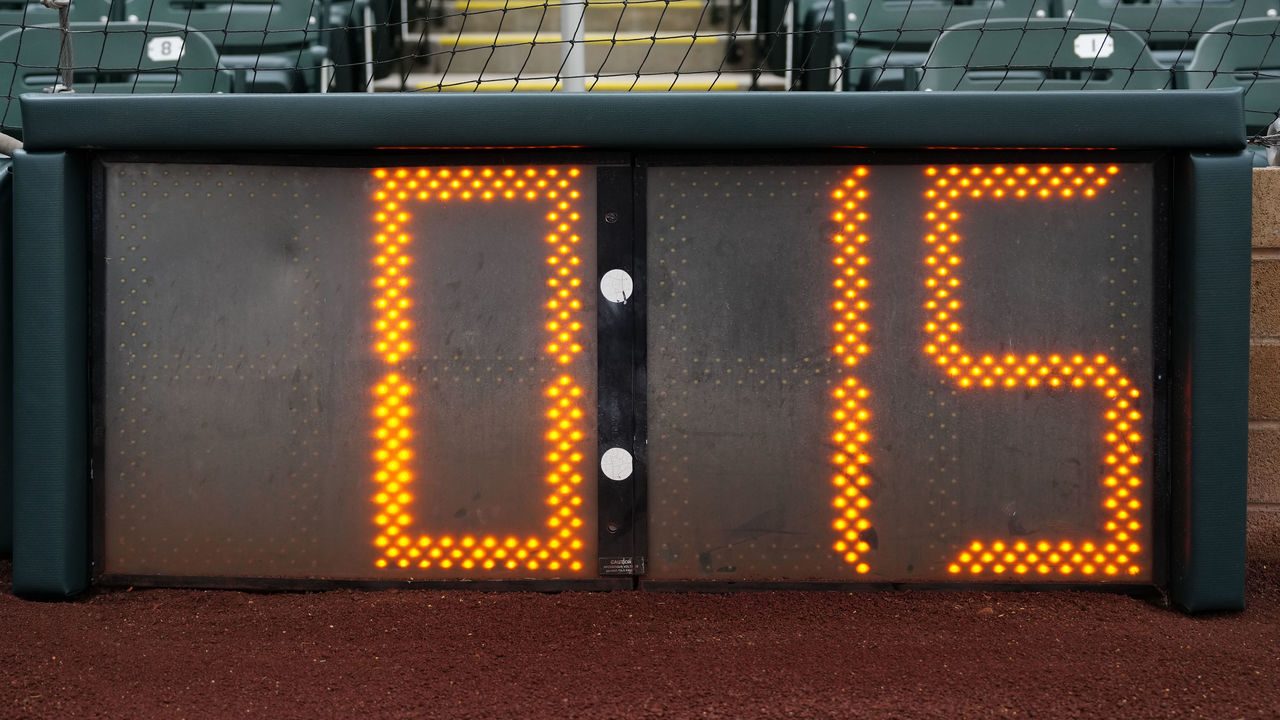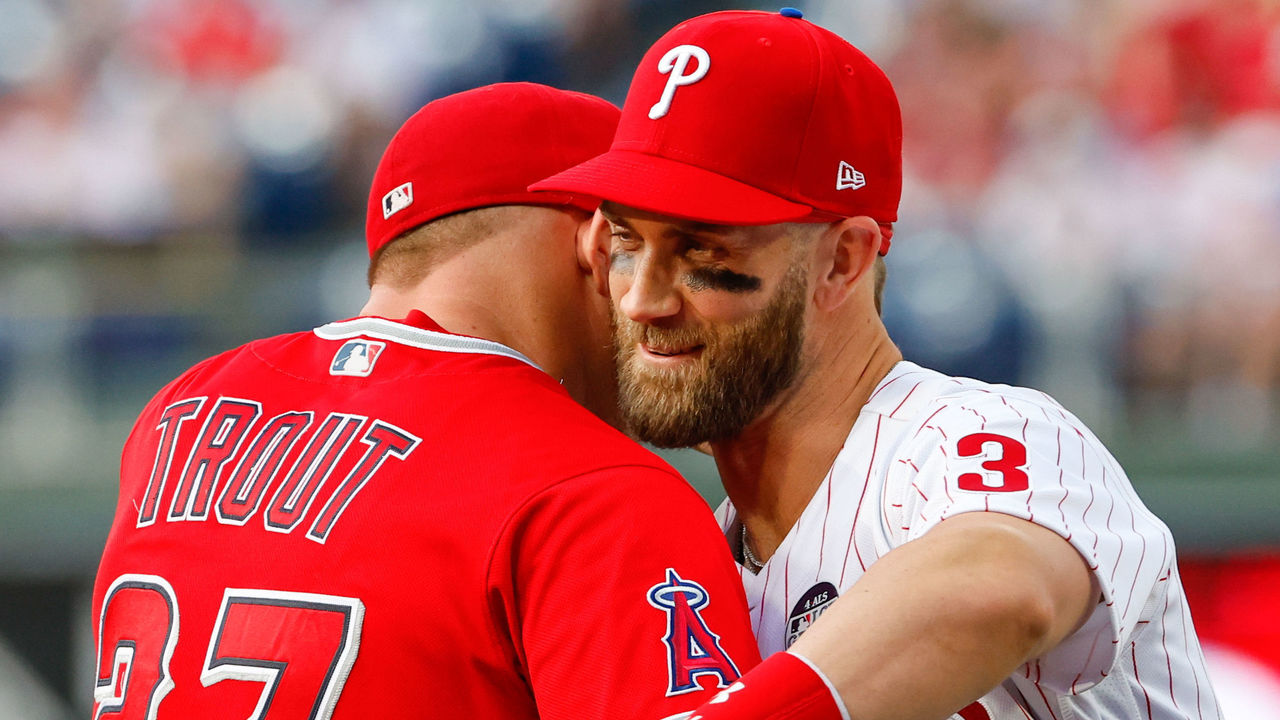Class in session: Epstein breaks down MLB’s monumental 2023 rule changes
MLB consultant and former World Series-winning executive Theo Epstein served as a guest in-studio analyst on the MLB Network special "What's New in 2023," which airs on the network Thursday at 7 p.m. ET.
Epstein broke down all of the new rules being implemented for the 2023 season, and theScore received an exclusive early viewing of his analysis.
"The game has evolved a lot over the last two or three decades, and some of those changes have been driven by optimizations that were led by front offices and people like me pushing them," Epstein said. "While it might have helped you win more games, it didn't necessarily change the game for the better for the fans in terms of the way the game is played on the field aesthetically."
Epstein noted that both the league and players tested and refined the changes across 8,000 minor-league contests over the last few seasons before bringing them to the majors.
The shift

What is the new rule: Two infielders must be positioned on each side of second base and may not switch sides unless there's a substitution. Infielders must have both feet within the outer boundary of the infield when the pitcher is on the rubber.
Once a rare practice utilized only for the most dangerous pull hitters, such as Ted Williams or David Ortiz, the number of extreme shifts skyrocketed over the last five seasons. In 2022 alone, there were over 60,000 instances of shifts being deployed. The style also changed: The four-outfielder alignment had become more common, and some teams even moved their third baseman all the way over to the right-field line.
Courtesy: MLB Network
The shift ban is designed to open up the field and encourage more balls in play, which in turn will highlight the athleticism of baseball's great defensive players.
"It's going to bring back the premium on athleticism, on range, on diving plays," Epstein said. "When we tested it out in the minor leagues, the group that really liked it were infielders. It puts the players back into the middle of the action."
More balls in play also means more offense, which is especially welcome news for left-handed pull hitters who've had countless base hits eaten up by shifts over the last few years.
"Pitching is so good right now that it's virtually impossible to hit the ball hard the other way and beat the shift, or players would have done it already," Epstein said. "With the league hitting .243 versus when we grew up hitting .265-.270, it's appropriate to be aggressive and try something new."
Pitch clock

What is the new rule: 15 seconds between pitches when bases are empty, 20 seconds with runners on base, and 30 seconds between batters. Hitters must be in the box and ready with at least eight seconds left on the clock and will receive only one timeout per plate appearance.
The pitch clock cut the time of a nine-inning minor-league game from 3:03 in 2021 to 2:38 in 2022. Pitchers would throw with lots of time still left on the clock so runners couldn't time them up as well. According to Epstein, fans will quickly notice the difference in the majors.
"The game, throughout its history, was played with a much better rhythm and pace than what we've seen the last 10-20 years," Epstein said. "Pitchers would get the ball, get the sign, and deliver, as natural as breathing. ... I think the adjustment period is going to be relatively quick. It's going to benefit hitters, it's going to benefit pitchers, and most importantly, it's going to benefit the fans."
Of all the new rules, the pitch clock was undoubtedly the most controversial, especially within baseball circles. To some, the very idea of a clock in baseball - the one sport without a timer - was almost blasphemous. But as the testing advanced in the minors, Epstein saw its effectiveness sway even the most traditional baseball minds.
"We had scouts (and other) long-time baseball people who've been around the game forever (that) wanted ... nothing to do with the pitch timer. And then when they would go see it in action in the minor-league games they were calling back saying, 'We need this in the big leagues right away, we love it,'" he said. "Because it just brings the action to the fore(front). All you're missing is the walking around the mound, the 30 seconds between pitches, stepping out every pitch.
"The rules were designed just to bring the action with a much better pace, not to have automatic balls or automatic strike penalties all the time. After the three-or-four week adjustment period (in the minors), teams averaged only half a violation per game. On average, there was only one automatic ball or one automatic strike every two games, and each team would go, on average, four games between having one. The rules are not designed to decide games based on violations."
Pitchers will only be allowed to disengage from the rubber twice during an at-bat and make one pick-off throw per at-bat (the disengagement count will reset if a runner advances to the next base). Violations will be called as a balk unless an out is recorded on the runner.
"When we first tested the pitch timer in the minor leagues, there was this giant loophole where pitchers would just step off and reset the pitch clock. So you have to limit the amount of disengagements from the rubber," Epstein said. "There's another reason behind it, which is to promote the running game."
Bigger bases

What is the new rule: First, second, and third bases increased from 15" to 18" square.
The stolen base has been trending downward for some time. Last year, there were only 1.3 stolen-base attempts per game by both teams - a large drop from the numbers at the turn of the century. Bigger bases will work in tandem with limiting disengagements to give base-stealers an advantage and bring the excitement of speed and aggressive baserunning back to the sport.
"Fans love stolen bases," Epstein said. "... By limiting the number of throws over (and) by going to slightly bigger bases, you now tilt the scales a little bit more in favor of the base-stealer. We're gonna see more stolen-base activity."
In the minors, Epstein noted, the number of steal attempts per game and success rate spiked noticeably under the new rules. While he acknowledges that run environment will still play a factor in deciding when to steal, he's anticipating a significant increase overall.
"I think you're gonna see the success rate go up, and because of that, you're gonna see the volume of attempts go up correspondingly. That's what we saw to a small degree in the minor leagues. We have a lot of room to add more stolen base activity before we get close to historical highs."
The best result would, of course, be a return of the elite 60 or 70 base-stealers wreaking havoc on the basepaths all summer long. Players like two-time stolen-base champion Trea Turner will obviously be running, but as teams start to get more aggressive, we might see non-traditional base-stealers grab their share of bags too.
"You're seeing higher success rates in the big leagues, but you're just not seeing that activity," Epstein said. "And I think the new rules might encourage not only more success, but also just more activity. Not just your (80-grade) runners, not just your experienced base-stealers, but your average runner, a good athlete maybe with good anticipation (who) can pick his spots."
Schedule changes

What is the new rule:
- 52 games vs. division opponents (13 vs. each team)
- 64 games vs. rest of league
- 46 interleague games
The adjusted schedule adds more balance after many years of over-emphasizing intra-divisional play. In the era of expanded playoffs, it's designed to create a more equitable wild-card race for teams playing in a tougher division. Teams will play 24 fewer games against their divisional rivals in 2023 than last year.
"With more wild-card teams - half the teams getting into the postseason now by way of the wild card - you want to make sure you have more of an equitable schedule," Epstein said. "If you were stuck in a powerhouse division like, say, the AL East, and you have to play each of those teams 19 times, it was a lot harder for you to get a wild-card spot than a team in a much weaker division.
"I think it's going to be refreshing. It makes the division matchups that much more special when there's only 13 of them."
The expansion of interleague play is also a historic moment for baseball, as all 30 teams will meet at least once during the regular season for the first time ever. Each club will play four games - two home, two away - annually against a designated natural rival and one three-game set against the other 14 interleague teams annually. Home sites for those series will rotate annually.
"It's great for the fans, too," Epstein said. "Now you get to see every player come through (your city). You don't have to wait six years for an interleague opponent to (visit). They're coming through every two years."